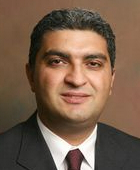Because most outsiders learn about a firm from news articles written about it, firms have incentives to manage how they are covered by media so that they are presented in the most favorable light possible. Our study examines whether the composition of a firm’s board of directors affect the way the firm is covered by media. Specifically, we investigate whether a board member with media expertise enhances the firm’s ability to manage how the firm is portrayed in the news.
We define an individual with past experience in a news organization as an owner, top executive, board member, editor, journalist, and so on as a media professional. We determine a firm’s willingness to actively influence media relations by the presence of such individuals on the firm’s corporate board. We then track firms’ media coverage and qualitative content of news stories using a large database of articles from Wall Street Journal, New York Times, and eight major local newspapers that meet our data requirements (Boston Globe, Chicago Sun Times, Denver Post, Pittsburgh Post-Gazette, San Francisco Chronicle, Seattle Post-Intelligencer, St. Louis Post-Dispatch, and Washington Post) between 1996 and 2006. We show that firms with media professionals on their boards experience both greater coverage and more favorable slant. Having a media professional on board increases the number of articles mentioning the firm by 33% and decreases the number of negative sounding words (slant) in articles mentioning the firm by 20% in a given year. We also find that press releases of firms with media professionals are 8% more likely to receive media coverage within five days following a press release than those without.
There are three potential explanations for these findings. The first explanation is the journalist attention, which suggests that journalists pay more attention to events occurring in firms that have media professionals on their boards. According to this explanation, Coca-Cola would be more likely than Pepsi to have coverage in the New York Times if Peter Rice, CEO of Fox Entertainment Group, were on the Coca-Cola board. This demand-side argument suggests that media professionals attract more media attention to a firm, rather than firms using media professionals as board members to become more visible to the outside world. While this explanation can explain excess coverage of firms with media professionals, it falls short of explaining why news about these firms have better slant.
The second explanation suggests that media professionals use their personal connections to influence media coverage and slant in the media outlets they are directly connected with. To investigate the relative importance of connections role, we focus on a sample of media professionals that have direct ties to Wall Street Journal and New York Times. We test whether these two journals have greater coverage or more favorable slant of firms that have media professionals who are connected to these journals on their board. We do not find any supporting evidence for the personal connections explanation.
The third explanation, namely the expertise channel, suggests that firms hire media professionals purposely to become more efficient in dealing with the media. This efficiency can take different forms. For example, media professionals’ expertise can help firms hire a better investor relation department, advertising agency, or a PR company. Additional tests we perform in the study provide results that are by and large consistent with this last explanation. Focusing on coverage and slant around major negative events, we investigate whether firms with media professional (who were hired before the events occurred) weather crisis better compared with other firms. We identify two categories of possibly sensational negative events involving conflicts between firms and their two major stakeholders, customers and employees. The first category of sensational events relates to product safety. Product safety events are events in which firms paid substantial fines or civil penalties or were involved in major controversies or regulatory actions due to product safety issues. The second category relates to employee safety. Employee safety events involve cases in which firms paid substantial fines or civil penalties for violations of employee health and safety standards. We examine whether media coverage of firms with media professionals on board is higher especially when an industry suffers from a high rate of violations. We find that media coverage of firms with media professionals is higher especially during these times, which supports the expertise channel explanation.
The influence of having media professionals on board on media coverage does not necessarily mean that the media impulsively favors these firms. We show that firms with media professionals also engage in more corporate social responsibility (CSR) activities following a bad event, suggesting that such firms are better positioned to find means to communicate newsworthy stories out to journalists, or to do activities that are more newsworthy. Collectively our results suggest that the composition of a firm’s board of directors can affect the way the firm is covered in the news: firms with media professionals on their boards enjoy both greater coverage and more favorable news slant, and the effect of media professionals is incremental to other channels previously documented in the literature.
The preceding post comes to us from Umit G. Gurun, associate professor of accounting at the University of Texas at Dallas – Naveen Jindal School of Management. The post is based on his paper, which is entitled “Benefits of Publicity” and available here.
 Sky Blog
Sky Blog
